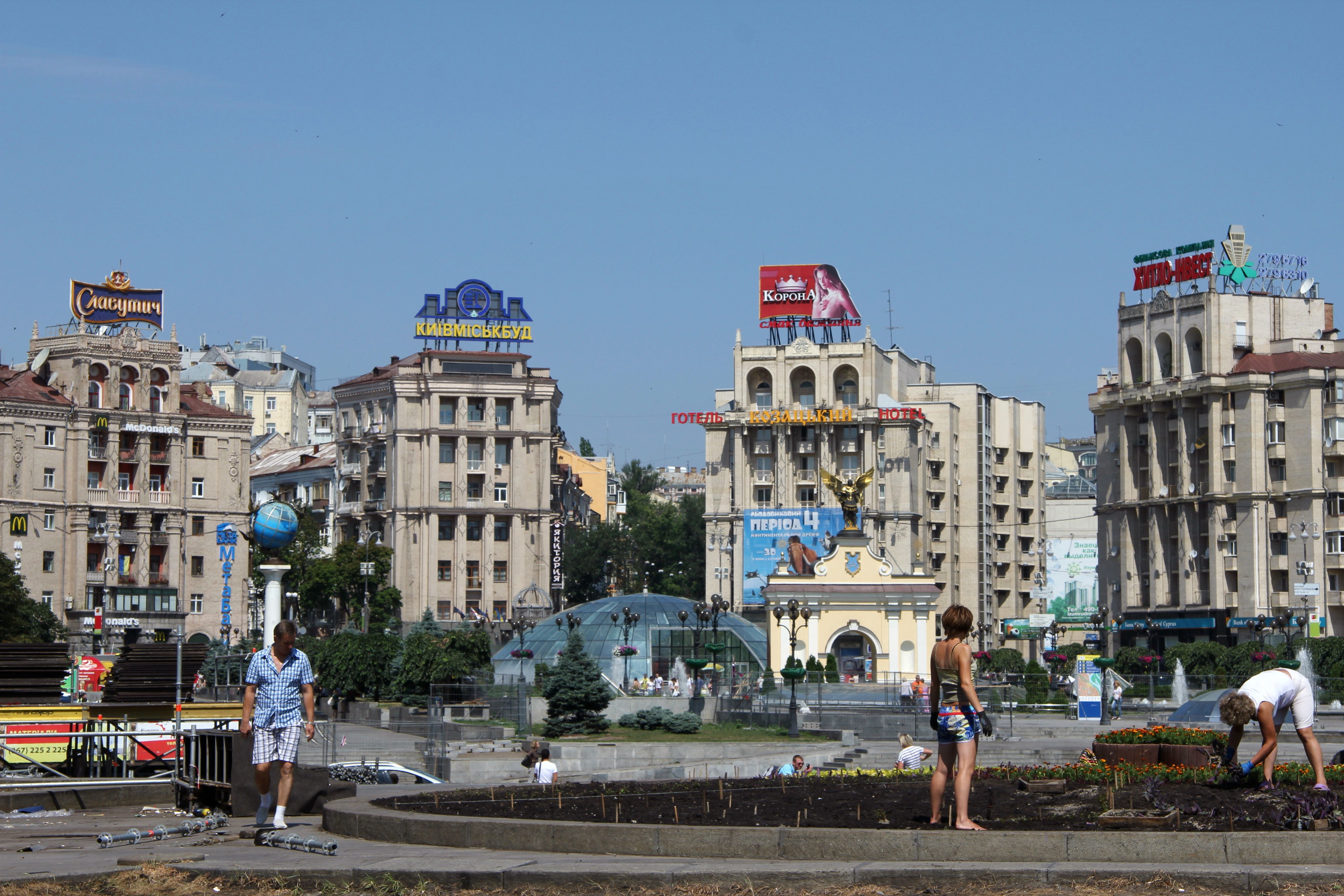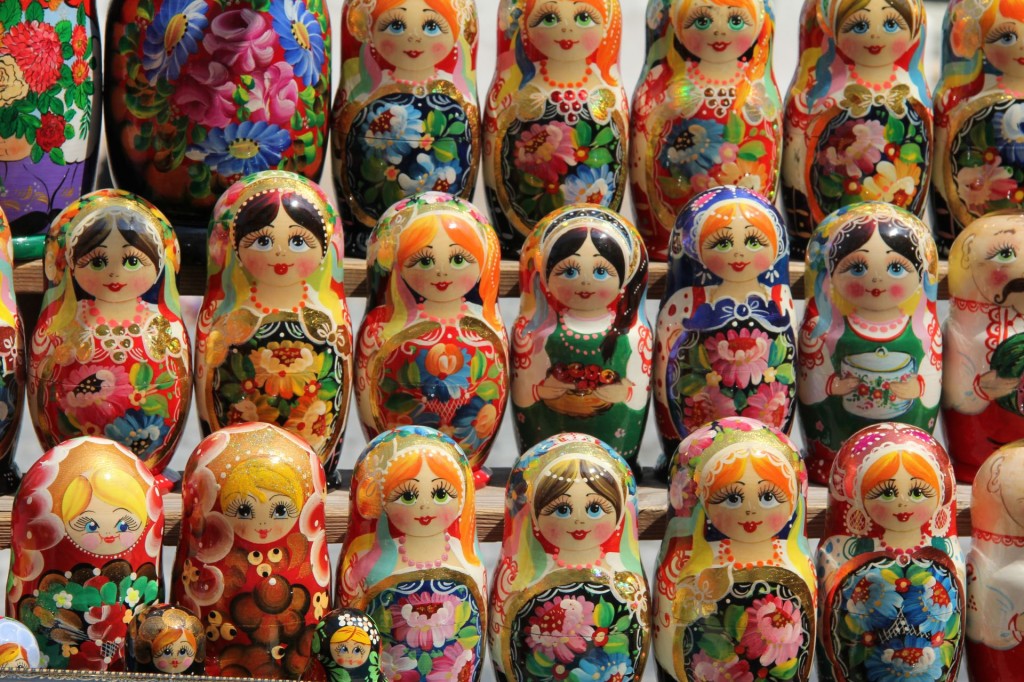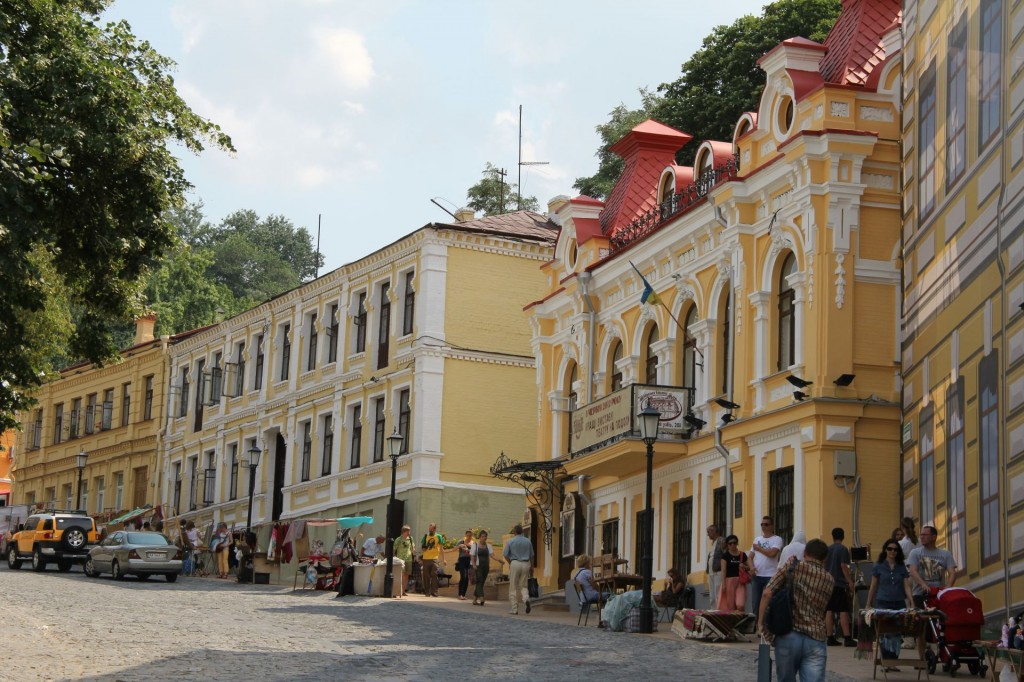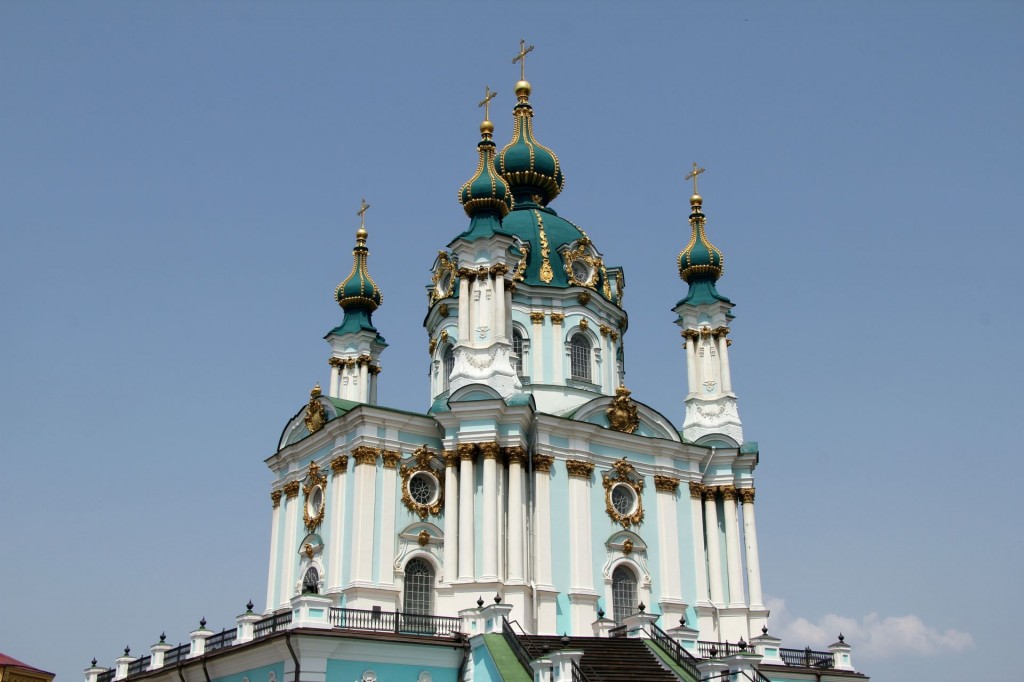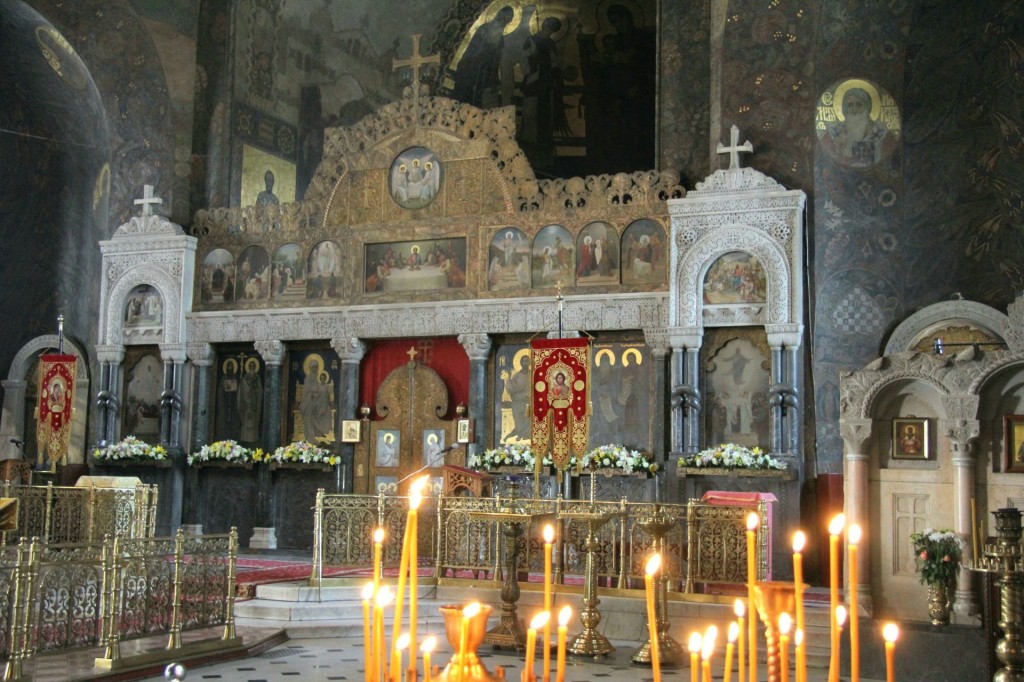During our tour through Eastern Europe this summer, we also visited Kiev (in Ukrainian called Kyiv), the capital of Ukraine. Kiev has around three million inhabitants and is situated on the right bank of the Dnjepr river. The best way to explore the city is the metro with its beautiful underground stations in Socialist Realistic design.
Although the suburbs consist of huge concrete buildings in Soviet style, the central part shows the spirit of a rich past. The first place we visited was the central boulevard Khreschatyk (Hreščatik) with its post-war Stalinist architecture and high fashion boutiques that leads to the magnificent Independence Square (Maidan nezalezhnosti). This square is often used for ceremonies and events, like for instance the closing ceremony of EURO 2012. Of course, this is also the district where you can see well-trained bodyguards with dark sunglasses standing beside a late-model BMW and waiting for their boss who is just buying a suit in the Armani boutique – it is well-known that anybody who is important in the shady world of Ukrainian business maintains a private apartment in the capital.
But the churches and parks have a way of making up for all that. And thus we visited the picturesque St. Vladimir’s Cathedral, the Golden Gate, the St. Mihail’s monastery complex and the St. Sophia’s Cathedral from the 11th century, which is the oldest cathedral in Ukraine. It is a pity that it is prohibited to take photos in most Orthodox churches and monasteries, as the interior parts are really stunning!
Although it was a very hot day, we found shade in one Kiev’s many wonderful parks. It is interesting to know that Kiev is one of Europe’s greenest cities, and that the numerous chestnut trees have become Kiev’s symbol.
Of course we also visited the charming street of Andriyivsky uzviz with its souvenir stalls overflowing on its cobblestones: here you can buy Ukrainian crafts, Soviet memorabilia, paintings and antiquities. The quaint houses, among which also the house of the Russian writer Mihail Bulgakov (now a museum), and the crooked pavements give the place a special atmosphere.
At the lower end of the Uzviz the view is dominated by the turquoise Baroque St. Andrew’s Cathedral, which was built in 1754 by the Italian architect Bartelomeo Rastrelli. 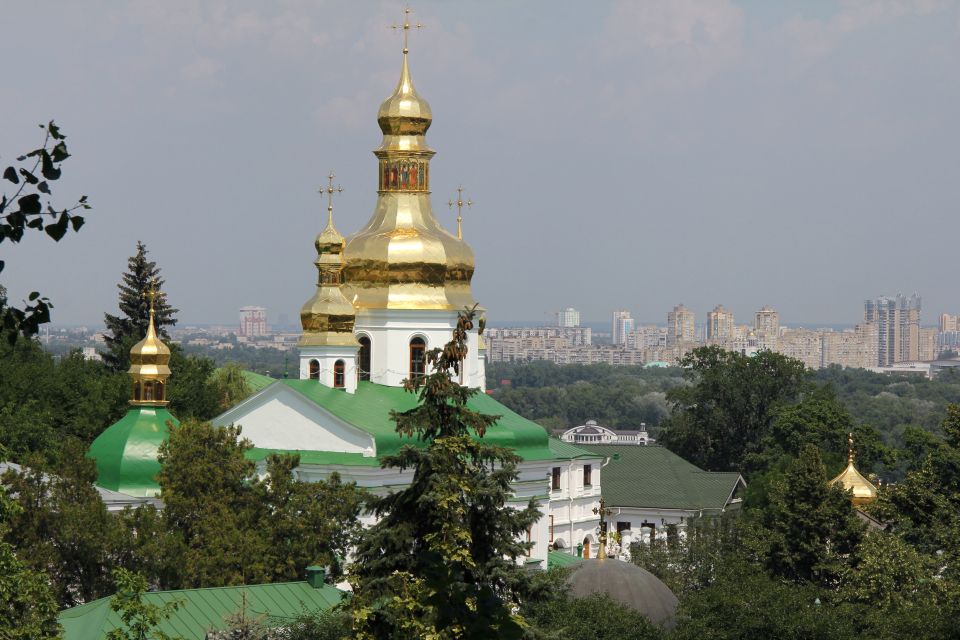
Of course, we needed another day to explore the most famous attraction of Kiev: the Kievo-Pecherska Lavra. Tourists and Orthodox pilgrims alike flock to this monastery complex that is listed on the UNESCO World Cultural Heritage list. It’s easy to see why the tourists come. Set on 28 hectares of grassy hills above the Dnjepr River, the monastery’s cluster of gold-domed churches is a feast for the eyes and the underground labyrinths lined with mummified monks are mystic and intriguing. The visit of the “pečere“ (which means „caves“) was a special experience, but is not exactly recommended for claustrofobics: there is no light, and the numerous believers enter the narrow corridors with a candle, looking for a place where they can pray.To me it looked like a horror movie!
But the churches and chapels in this complex are of a special beauty, not only the golden domes and the painted walls, but also the interior parts. It is therefore understandable that Lavra has become a tourist destination, with many souvenirs and icon shops, cafés and restaurants. We will certainly remember Kiev as one of the most beautiful cities in Eastern Europe. Kiev is worth a visit!
